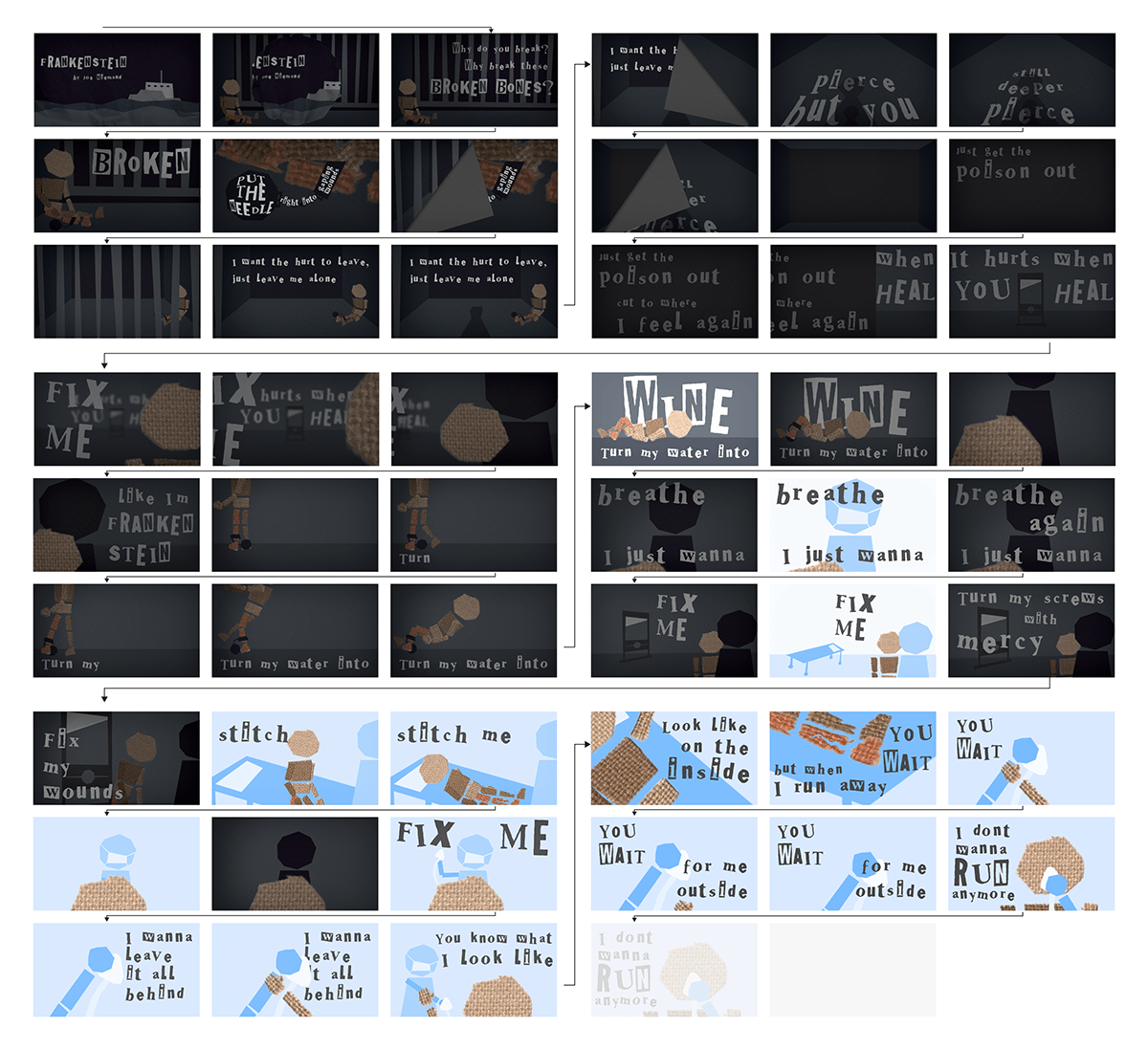

As a South African observer, it is evident that many local musicians face challenges in garnering significant exposure. One notable avenue for increasing visibility in the music industry is through the production of music videos. However, conventional music video production is often hindered by its high cost and time-intensive nature.
An attractive alternative to traditional music videos is the creation of lyric music videos. These videos utilize visual components to convey the lyrics and the underlying meaning of a song. The primary emphasis in lyric music videos is placed on typography, with additional visual elements serving to complement and reinforce the intended message.

"Frankenstein" by Joe Niemand became familiar to me in 2015, offering profound insights into the journey of recovery following periods of adversity such as addiction, abusive relationships, or mental health challenges. The song poignantly articulates the necessity of undergoing the often agonizing healing process to regain one's footing.
Irrespective of one's background, the thematic depth of "Frankenstein" renders it universally resonant. As humans, we inevitably encounter hardships. Opting to traverse the arduous path toward healing and redemption is undeniably challenging, yet indispensable for the restoration of one's life.

Initially, my creative endeavor delved into the theme of individuals inadvertently giving rise to their own inner demons, which gradually wreak havoc upon their lives. This concept draws a parallel to Mary Shelley's renowned novel "Frankenstein," wherein the titular character, driven by a desire to fashion his own race of adoring beings, inadvertently births a monster. However, repulsed by its appearance, Frankenstein forsakes his creation, thereby triggering a sequence of events wherein societal rejection propels the creature toward vengeance, resulting in the demise of Frankenstein and his loved ones.
While my concept draws heavy inspiration from Shelley's work, it diverges in its narrative trajectory, envisaging a resolution where the protagonist is rescued from the clutches of their creation by a steadfast ally before irreparable harm ensues.


In my attempt to convey this conceptual narrative, I encountered challenges in its application within the intended context. Regrettably, I found that the visual elements assumed precedence, eclipsing the importance of typography. Furthermore, upon reflection, I recognized the overt literalism within my storyboards. It became evident that a successful lyric music video should not merely serve as a literal retelling of the narrative but should instead strive for a more metaphorical and nuanced mode of communication.

Following further research and extensive brainstorming, I have refined my concept significantly.
As human beings, adversity is an inevitable facet of life. However, rather than resigning ourselves to the status quo when faced with hardship, we must recognize that redemption is always within reach. The key lies in embracing the daunting yet transformative journey of healing.


While maintaining the use of characters and literal scenery, this revised storyboard adopts a more metaphorical approach in its narrative.
The protagonist finds themselves incarcerated within a prison setting reminiscent of Alcatraz, burdened by isolation and constrained by a ball and chain. This imagery symbolizes the emotional and psychological imprisonment imposed by life's adversities. As the story unfolds, the character is escorted to an execution room, representing the resignation to their circumstances.
Intermittently, the scene transitions to an alternate setting, eventually revealed to be a hospital. Here, it becomes apparent that the character's perceived imprisonment is, in fact, a metaphor for their physical ailment—a broken leg. The figure initially mistaken for a prison guard is, in reality, a doctor endeavoring to provide assistance.
In a pivotal moment, the protagonist relinquishes control to the doctor, signifying a willingness to embark on the journey of healing and restoration. This act of surrender underscores the transformative power of acceptance and the pursuit of redemption.


This animation employs a stylistic direction influenced by the Bauhaus movement, renowned for its emphasis on geometric forms and minimalism. Additionally, it draws inspiration from the title sequences crafted by Saul Bass, known for their use of clean lines and simple shapes.

In this animation, a dual-color palette approach is employed to differentiate between the prison and hospital settings.



The chosen typeface draws inspiration from the Frankenfont project, which reimagined the Frankenstein novel using a variety of fonts. This choice resonates with the concept of the Frankenstein monster, as it is composed of disparate elements akin to the amalgamation of body parts from various creatures.







Paragraphs were edited using ChatGPT








